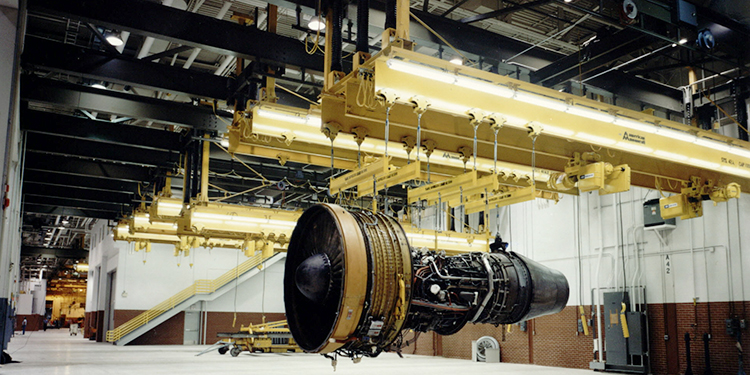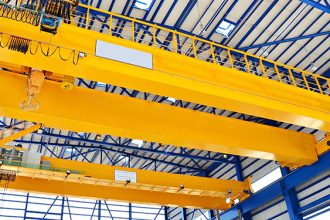
The first presentation of the fourth annual Overhead Lifting Safety Webinar Series (www.mhi.org/overheadsafety), “Dangers From Above: Integrating Overhead Lifting into a Resilient Safety Strategy,” was broadcast on October 28. During the hour-long session, three panelists offered insights into how their companies create a safe workplace by ensuring employees know how to perform their jobs safely and without injury. They included:
- Michael Groh, Global Health and Safety Process Leader at GE Appliances, a Haier company
- Austin Monteiro, Safety Manager at American Crane & Equipment Co.
- Dawne Veet, Safety Chair, Training and Records for the Three Mile Island Nuclear Decommissioning Plant
The three panelists shared their company’s safety strategy and best practices for integrating overhead lifting — including cranes, hoists, monorails, and rigging — into their program. Among the recommendations were:
- Train employees on the safe operation of cranes, hoists, monorails, and rigging both in the classroom and hands-on under the guidance of an experienced overhead equipment operator.
- Train new hires on safety on their first day; repeat that training at routine intervals.
- Purchase and install equipment with safety features engineered into the system such as variable frequency drives, anti-sway technologies, hook centering, collision avoidance systems, limit switches, brake slip detection, and more.
- Ensure all personnel interacting with the equipment are familiar with the design of the crane, hoist, and monorail systems and their integrated features.
- Develop and implement written safe lift plans.
- Train operators to continually monitor their surroundings and the function of the overhead lifting equipment.
- Create a culture of safety wherein operators and other personnel feel comfortable reporting their concerns about unsafe situations to their supervisor and the environmental health and safety (EHS) team.
- Do not require an employee to do a job they consider unsafe.
- Encourage personnel to watch over and peer coach each other on safe practices.
- Conduct and record regular safety meetings.
- Perform routine safety inspections to identify and eliminate unsafe work conditions and comply with all federal and state health and safety requirements.
- Review injury data to identify areas and topics that should be revisited with increased training, additional safety meetings and frequent reminders.
- Investigate accidents to determine the cause and implement measures to prevent similar accidents in the future.
The Overhead Lifting Safety Webinar Series is presented by MHI’s Overhead Alliance, which includes the Crane Manufacturers Association of America (CMAA), the Hoist Manufacturers Institute (HMI), and the Monorail Manufacturers Association (MMA). Designed for owners, operators, maintenance, and safety personnel responsible for overhead lifting cranes and hoists, the series features presentations and Q&A from several industry experts and a representative from the Occupational Safety and Health Administration (OSHA). The other three topics covered include:
- OSHA Overhead Lifting Safety Review and Presentation of Upcoming Initiatives
- Overhead Lifting Safety Innovations and Panel Discussion
- Best Practices for Safe Operation of Below-the-Hook Lifting Equipment
It’s not too late to gain access to the webinars. All four presentations have been recorded and are available with paid registration of $300, which also includes complimentary copies of safety and specification publications from the Overhead Alliance (a $260 value).
To register to view the Overhead Alliance’s Overhead Lifting Safety Webinar Series, visit www.mhi.org/overheadsafety.



